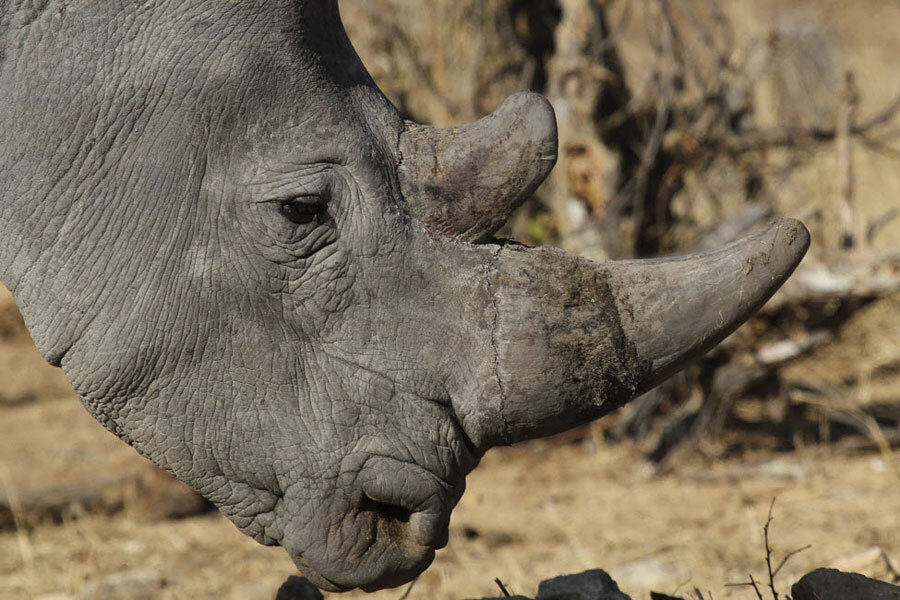Only six northern white rhinos left. Is there any chance of a comeback?
Only six northern white rhinos remain, leaving few options for rebuilding the population of this subspecies as it plunges into extinction.
One of the few rhinos left, a male named Suni, died in the Ol Pejeta Conservancy in Kenya this week. Suni was born more than 30 years ago at the Dvur Kralove Zoo in the Czech Republic. The average lifetime of a white rhinoceros averages between 40 and 50 years, making Suni's death somewhat unexpected. But Suni's father died from natural causes at about the same age, according to a zoo press release.
Dvur Kralove has successfully aided the breeding of the northern white rhino in captivity before, but it's the only zoo to have done so. In 2009, the Czech zoo transferred Suni and three others from his subspecies to the Kenyan wildlife conservancy.
The white rhinoceros, despite being the second largest land mammal, is no match for a poacher seeking profit in exchange for the animal's hefty keratin horn. Buyers from China and Vietnam, the primary markets for illegal horn trade, can pay thousands of dollars for just a piece of one horn, desired for its alleged medicinal powers.
"The number of rhinos killed by poachers has increased incredibly in the past few years," Dvur Kralove spokeswoman Jana Mysliveckova told Agence France-Presse. "According to some scenarios, there will be no rhinos left in the wild in Africa in 10 years or so."
The subspecies's close relative, the southern white rhino, is not as threatened. Thought to be extinct over a century ago, the southern subspecies' population has rebounded to around 20,000.
The greater population of the southern white rhino could aid in reproduction of its northern counterpart. Scientists who have studied the critically endangered animal claim that dramatic population loss has reached the point at which inter-crossing the two subspecies will likely be necessary for the survival of the northern white rhino. Geneticists view breeding rhinos across subspecies as a last resort of sorts, because of the possibility that the genes of the northern white rhino would not be preserved.
Other options are even less appealing. The six remaining animals in the subspecies would have to inbreed to produce any pure-bred offspring. But the negative effects of inbreeding, like reduced fertility and higher infant mortality rates, decrease the likelihood that the population of the subspecies could rebound this way.
"One can always believe in miracles but everything leads us to believe that hope they would reproduce naturally has gone," said Mysliveckova.
Considerable distance separates the several surviving northern white rhinos: three reside in Kenya's Ol Pejeta, an older couple lives in the San Diego Zoo Safari Park, and one female still calls Dvur Kralove home.







